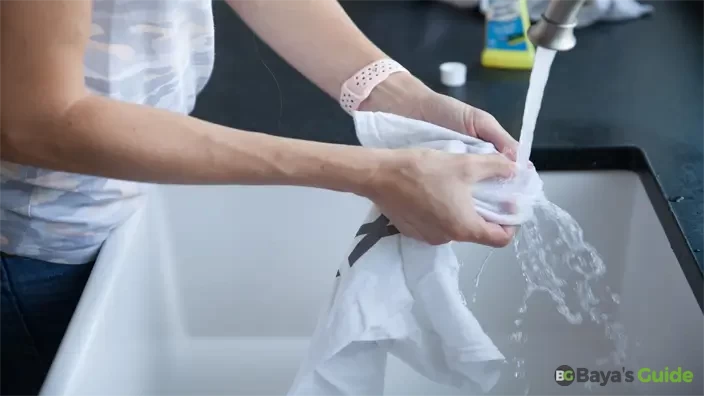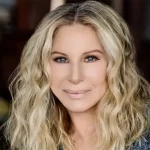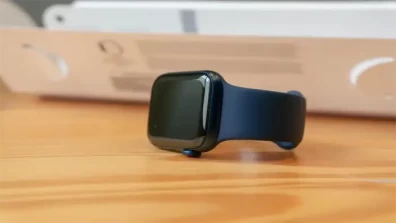Parenthood is a joyous journey filled with memorable moments, but let's face it—dealing with diaper blowouts and stubborn poop stains on baby clothes is an inevitable challenge. As every parent knows, these unsightly marks can be a persistent issue, leaving you wondering how to salvage those adorable onesies and tiny outfits.
It doesn’t matter at all whether your child is breastmilk-fed or has included solid diets in its mealtimes, vanishing poop stains becomes challenging. Very often, these stains or marks ruin a beautiful and costly baby outfit. Plus, the chemical detergent that you use to eliminate these stains not only tarnishes the dress color but also can cause rashes on your baby’s soft skin.
Fear not! In this guide, we'll unravel the mystery of effectively removing poop stains from clothes, offering practical tips and tricks to ensure your little one's wardrobe stays fresh and stain-free. We've got you covered from quick pre-treatment methods to choosing the right washing techniques. Say goodbye to the worry of stubborn stains, and let's dive into the solutions that will keep your baby's clothes looking as good as new.
Table of Contents
- Dealing With Poop Stains On Baby Clothes - Effective Solutions
- Step 1: Remove Your Baby's Grimed Clothing Instantly
- Step 2: Act Swiftly
- Step 3: Scrape The Poop Out Of the Clothes
- Step 4: Rinse The Stained Clothes
- Step 5: Prior Washing Treatment
- Step 6: Choose The Right Detergent
- Step 7: Machine Wash The Clothes
- Step 8: Wash With Cold Water
- Step 9: Vinegar As A Natural Cleaner
- Step 10: Extra Rinse For Thorough Cleaning
- Step 11: Lighten Stains Naturally: Sun & Lemon Method
- Step 12: Check Carefully For Lingering Stains
- Preventive Measures For Baby Clothes Staining
- Precautionary Measures For Tough Stain Removal
- Frequently Asked Questions
- Conclusion
Dealing With Poop Stains On Baby Clothes - Effective Solutions
Step 1: Remove Your Baby's Grimed Clothing Instantly
Don’t leave your kid with soiled clothing any longer. The faster you wash the stain, the quicker it’ll be removed. Stain removal is not worth considering when the marks are fixed. As you know that yellow kinds of Poop stains are from breastfed newborns and are harder to eliminate. Most often the mothers would have to discard those stained clothes because they can't remove the yellowish bad mark from the most expensive clothes and feel worried about it. For a quicker result, you need to remove baby clothing instantly and put them under cool water.
Step 2: Act Swiftly
The key to successful stain removal is acting promptly. As soon as you notice a poop stain, try to address it before it sets into the fabric. The quicker you act, the easier it is to prevent a lasting mark.
Step 3: Scrape The Poop Out Of the Clothes
If the poop gets stuck to the clothing and keeps on sticking with it for longer, the cleaning gets tougher and impractical. Eliminate all the poop from the leggings before putting it in the washing machine or washing tub, otherwise, it causes it to spread all around and it becomes impossible to take it out. The best process is to clean the poop with a baby wipe or paper towel. Plus try not to rub it until you remove all the mess from it as it can worsen the stain.
Step 4: Rinse The Stained Clothes
Begin by gently scraping off any excess poop with a dull knife or spoon. Be cautious not to spread the stain further. Rinse the clothing under cold running water to remove as much residue as possible.
After removing the poop, spread the clothes under the open cold water to wash each additional feces particle from it. Remember, the water you have streamed on it should be in bulk to ensure that each soil is poured through. If the stain area is very small, then you need not wash all the clothing pieces altogether. Hold the particular area that is soiled, and remove each mess entirely from that area. Apply the soap or washing detergent, rub it, and rinse it off in running water.
Step 5: Prior Washing Treatment
You need not waste your energy and time rubbing or brushing the poop stain as it sets off the stain. These stains are protein-based, an enzymatic cleaner is the best cleaner for these types of stains. First, wash the poop clothing; spread it on a flat area, then spray enzymatic cleaner on the stains point and leave it for almost 30 minutes. The cleaner effectively breaks the poo particles and helps you wash quickly and easily.
Step 6: Choose The Right Detergent
Opt for a baby-friendly, enzyme-based detergent designed to break down organic stains like those from poop. Avoid using bleach, as it can damage delicate fabrics and may not be suitable for baby clothes.
Most of the mums trust Fels Naptha to remove the yellowish stains miraculously. Rub this laundry detergent since it turns into heavy foam and let it get absorbed in the fabric for a few minutes. If the poop stains are older, then it’s greater to keep the fabric soaked in the enzyme cleaner overnight. The cloth manufacturer strictly prohibits using hot water as it loosens the cloth-stretching. Moreover, the heavier the poop stains, the longer and more intensive pre-treatment should be.
Even after getting fail in remove the stain from the bottom, soak the fabric in a bucket full of warm water with a required amount of OxiClean for a few hours.
Step 7: Machine Wash The Clothes
Give the fabric a few wash cycles in the washing machine after adding a scoop of color-safe bleach. You may use cold water or warm water as you take in routine but avoid soaking the fabric in the hot water as it can either make the spot permanent or discolor the fabric. One thing should be very clear, don’t add your baby’ poop clothing with the other laundry of your family member, as the poop makes other clothes dirty too.
Step 8: Wash With Cold Water
Wash the treated clothing in cold water, as hot water can set the stain. Check the care label on the garment for specific washing instructions. If the stain persists after the first wash, repeat the pre-treatment and washing process.
Step 9: Vinegar As A Natural Cleaner
Vinegar is considered a great substitute for intensive bleaches. After you have applied the pre-treatment in the form of enzyme cleaner, squeeze the fabric to get all the excess water out. Lay down the baby's clothing in the washing machine, add 500 mL vinegar, and run it for a few circles, it will surely lift off the toughest stains.
Step 10: Extra Rinse For Thorough Cleaning
Run the fabric in washing water with plain water so that all residue of soap or detergent should be rinsed off properly and thoroughly. The baby’s clothes need to be rinsed with water because the baby‘s skin is sensitive, and any detergent residue may irritate it harshly. So, it’s better to put the clothes in the washing machine with extra water on more time to ensure that it is purely rinsed off each leaving.
Step 11: Lighten Stains Naturally: Sun & Lemon Method
The sun is a naturally bleaching phenomenon that incredibly flies off any stains. If you notice that some stain is left even after all your efforts, spatter lemon liquid over the stain and spread it under the sun. When it gets dry, wash it again in plain water once again to get a smoother and cleaner fabric.
Note: Harness the power of natural sunlight. After washing, hang the clothes outside in direct sunlight to air dry. Sunlight has natural bleaching properties that can help fade remaining stains.
Step 12: Check Carefully For Lingering Stains
The application of a dryer is very convenient, and it can turn a light stain into a stern stain. Since your clothes are wet, you can observe the stains remaining. So, it’s better to apply an air dryer before you go to put it into the drier machine. If you notice that there are still some stain leftovers, apply the pre-treating stain method again instantly.
If the stain lingers, be patient and persistent. It may take a few attempts to completely eliminate it. Avoid using heat, as it can make the stain more challenging to remove in the future.
Read More: How To Remove Iron On Patches
Preventive Measures For Baby Clothes Staining
Being parents if you are going to put your baby in a cloth diaper, a method some mums have effectively used and that is putting a fleece fabric piece inside the diaper. This fabric is thick enough to hold all the mess inside and not let it reach the clothing. So, it protects your baby's items of clothing from getting stained. After that, you can drag the fabric linen smoothly and waste it or wash it separately.
Precautionary Measures For Tough Stain Removal
As the fabric varies, the stains require unique work to remove. Here are some effective tips you should follow to cut off the harsh and tough stains as given below.
- Treat the stained area instantly as it is still wet. It gets stuck to the fabric as you leave it longer to stay dry.
- Wash the stained area with room temperature water as normal water can wash away all the excess residue of your detergent that also stays on the stain.
- Avoid applying harsh scrubbing on the baby's clothes.
- It is compulsory to apply Dreft Stain Remover on the garments before rinsing them off.
- Wring the Fabric properly to observe keenly if there are any stains or remnants left, then throw it to dry.
- Apply the above-given strategies wash it in a few circles of the machine and then put it in the dry machine.
Frequently Asked Questions
What Are The Best Stain Removers For Baby Clothes?
When the issue arises about the perfect stain remover for baby’s diapers, Puracy Stain Remover and Laundry Detergent are considered the most effective poop stain-removing companion. These detergents have plant-based formulas in their production, so they not only remove the toughest stains easily rather hypoallergenic formula protect soft baby’s skin from irritation.
How Do I Stop My Diaper From Leaking Poop?
Keeping in view the necessities of babies, advanced diapers with tight waistbands, heavy pads, and leg cuffs are available in the markets. But remember that your baby's diaper should be flexible, not too tight to the waist and legs so that the baby may not get irritated.
How Long Can Poop Stay In A Diaper?
The duration a diaper can contain poop varies based on factors such as the baby's age, diet, and the type of diaper used. Generally, it's advisable to change a baby's diaper as soon as possible after they have a bowel movement to maintain good hygiene and prevent skin irritation.
Newborns may need more frequent changes, while older babies with solid food diets may have less frequent but more substantial bowel movements. Pay attention to your baby's cues and aim for timely diaper changes to ensure their comfort and well-being. Besides, most experts recommend that the diapers should be changed after three to four hours.
Is It Safe To Allow A Baby To Sleep In A Poopy Diaper?
It is not recommended to let a baby sleep in a poopy diaper. Keeping a baby in a soiled diaper for an extended period can lead to discomfort, skin irritation, and an increased risk of diaper rash. It's important to change your baby's diaper promptly after a bowel movement, even during sleep, to maintain good hygiene and ensure their well-being. If your baby tends to sleep for long stretches, consider using overnight diapers designed for extended use, but still, change them as soon as your baby wakes. Regular diaper changes contribute to a healthier and more comfortable experience for your baby.
Conclusion
In conclusion, mastering the art of removing poop stains from baby clothes is a valuable skill for any parent. By following these step-by-step guidelines, you can effectively tackle even the toughest stains, ensuring that your little one's wardrobe remains fresh and stain-free. Remember, accidents are inevitable, but with the right techniques and a proactive approach, you can keep those adorable outfits looking pristine. Happy parenting!





















